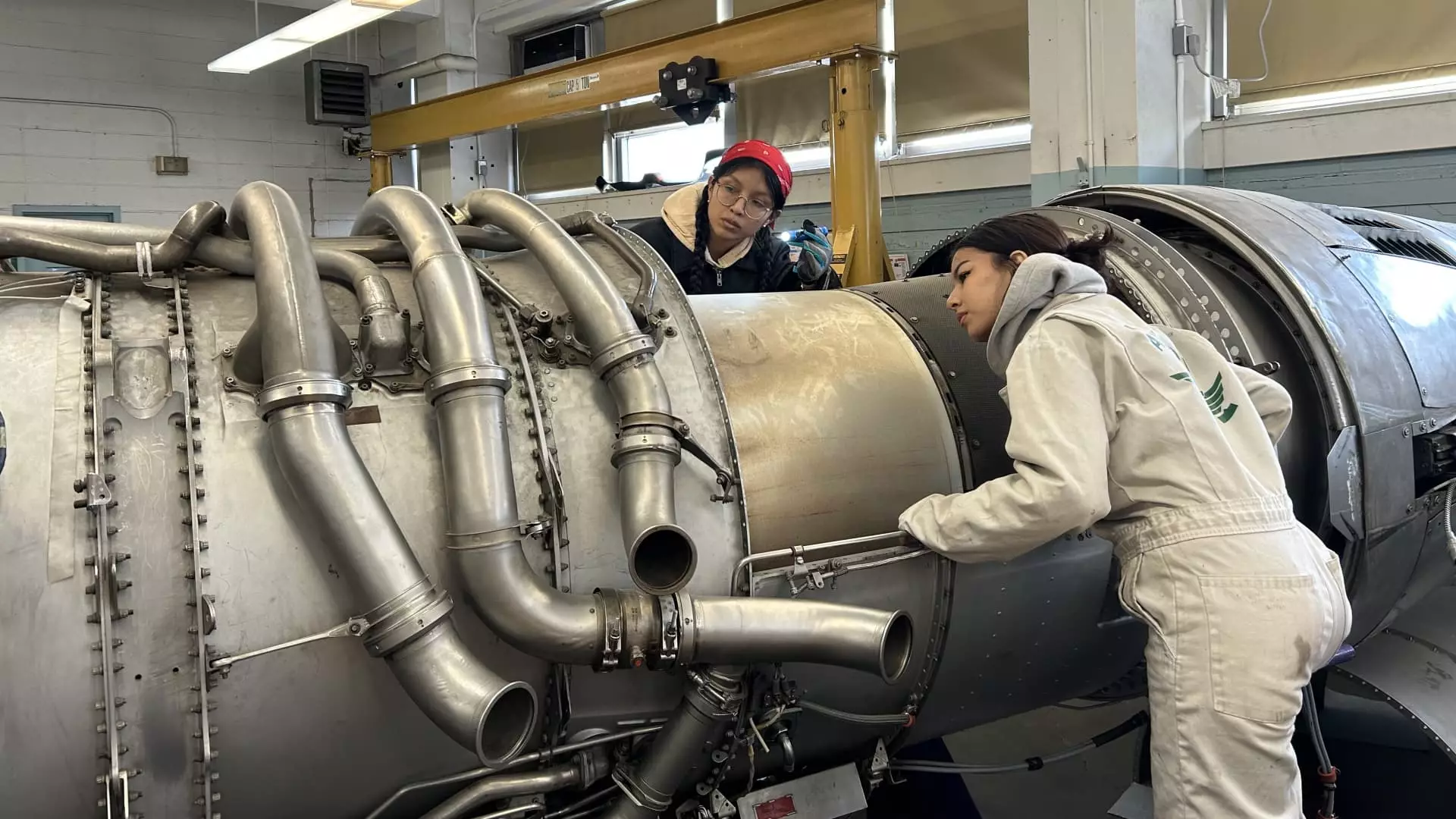As the echoes of President Donald Trump’s promises to resurrect manufacturing jobs ring hollow, one crucial sector is battling a silent but dire crisis. The American aviation industry, long regarded as a symbol of technological advancement and economic vitality, is facing an impending catastrophe regarding its workforce. An overwhelming 25,000 skilled aircraft technicians are predicted to be missing by 2028, yet companies struggle against an aging workforce where the average age of maintenance personnel is 54. Simply put, the industry’s existential threat isn’t just about job numbers but the very future of aviation safety and innovation.
The aviation sector’s talent pipeline is slowly drying up as experienced mechanics and technicians begin to retire en masse, leaving the industry ill-prepared for a technological renaissance that demand requires. This is not just a numerical deficit; it’s a skills gap that threatens to destabilize an entire industry. Living in the shadows of a post-pandemic recovery, companies have not only lost experienced workers but also face a mountain of skepticism in attracting a younger generation. The question that lingers is, can America truly reclaim its aviation industry, or has the window dissipated with the winds of time?
Retirement and Resignation: The Two-Headed Hydra
The high age average among aircraft technicians is alarming. With nearly 40% of these essential workers over 60, we are witnessing a generational shift that could dismantle an industry once lauded for its prowess. Companies like American Airlines and GE Aerospace are left scrambling for talent, yet the allure of aerospace isn’t what it once was. Job cuts during the pandemic didn’t just eliminate positions; they severed connections to a future that could engage young minds in technical fields.
A sector that once represented innovation and opportunity now stands as a cautionary tale for younger generations. How can an industry rife with uncertainties captivate a demographic that often prioritizes technological advancements over traditional roles? A talented workforce isn’t merely a statistic. It’s the cornerstone of development, pushing forth innovations that define the aviation landscape. The lack of subsequent, bright-eyed talent coming into aviation roles feels like a betrayal to those who dedicate their lives to mastering this field.
Wages and Incentives: A Band-Aid on a Gaping Wound
Let’s talk about numbers. The median income for aircraft technicians sits about $79,140 annually, starkly contrasting the nation’s median income of around $49,500. Yet, experts caution that despite rising wages, it might not suffice to lure a younger workforce. It raises the pivotal question: Is merely increasing wages the solution, or is there a deeper disconnect at play?
Sarah MacLeod, representing the Aeronautical Repair Station Association, sheds light on industry woes, arguing that simply hiking wages won’t fix the systemic issues. It’s a poor sentiment when workers clamoring for better conditions are met with half-measures. Instead, the industry needs a hearty commitment to making aviation jobs not only lucrative but appealing and accessible. There’s an urgent need to invest in outreach, education, and engagement; otherwise, the aviation industry risks becoming irrelevant.
Education: The Key to Tomorrow’s Skies
In an age where technological prowess reigns supreme, educational programs must reinvent themselves to attract and cultivate new talent. Schools like Aviation High School in Queens are a testament to this need, with students willing to forgo higher education for the immediate opportunities in the aviation sector. Incentivizing these young minds with hands-on experience isn’t just beneficial; it’s essential for revitalizing an ailing industry.
Today’s students – tomorrow’s technicians – are hungry for the skills that will launch them into aerospace careers. The shift from traditional college pathways to specialized training programs akin to apprenticeships is a harbinger of change that the industry desperately needs. The fact that aviation education captures 5,000 applications points to a flourishing interest that could reshape tomorrow’s workforce. Yet, educational institutions, too, must evolve to instill not just technical knowledge but a strong sense of pride and purpose to the role their students will take on.
Changing the Narrative: Shaping Perceptions of Manufacturing
Remarkably, there’s a shift in how we perceive manufacturing and technical careers. Companies like American Airlines are working hard to make aerospace roles attractive to younger generations, emphasizing that, contrary to antiquated views, these careers are at the forefront of innovation. Employing cutting-edge technologies and dynamic processes provides a fresh perspective for the youth who often think of manufacturing as obsolete.
It’s about more than employment; it’s about fostering an environment where young individuals can see the tangible impacts of their work on aviation safety and efficiency. As the industry grapples with its identity crisis, it must prioritize repositioning itself as a hotbed of innovation, beckoning tech-savvy individuals to join the ranks dedicated to impactful work that saves lives and propels humanity forward.
In the face of this workforce turmoil, it’s crucial that we pivot our energy not merely toward filling positions but toward reviving the essence of what it means to work in aviation. With the right mix of incentives, outreach, and education, the aviation industry could reclaim its vital standing as a beacon of hope in the American economic landscape. Let’s not wait until it’s too late to rethink our approach; the skies depend on it.


Leave a Reply